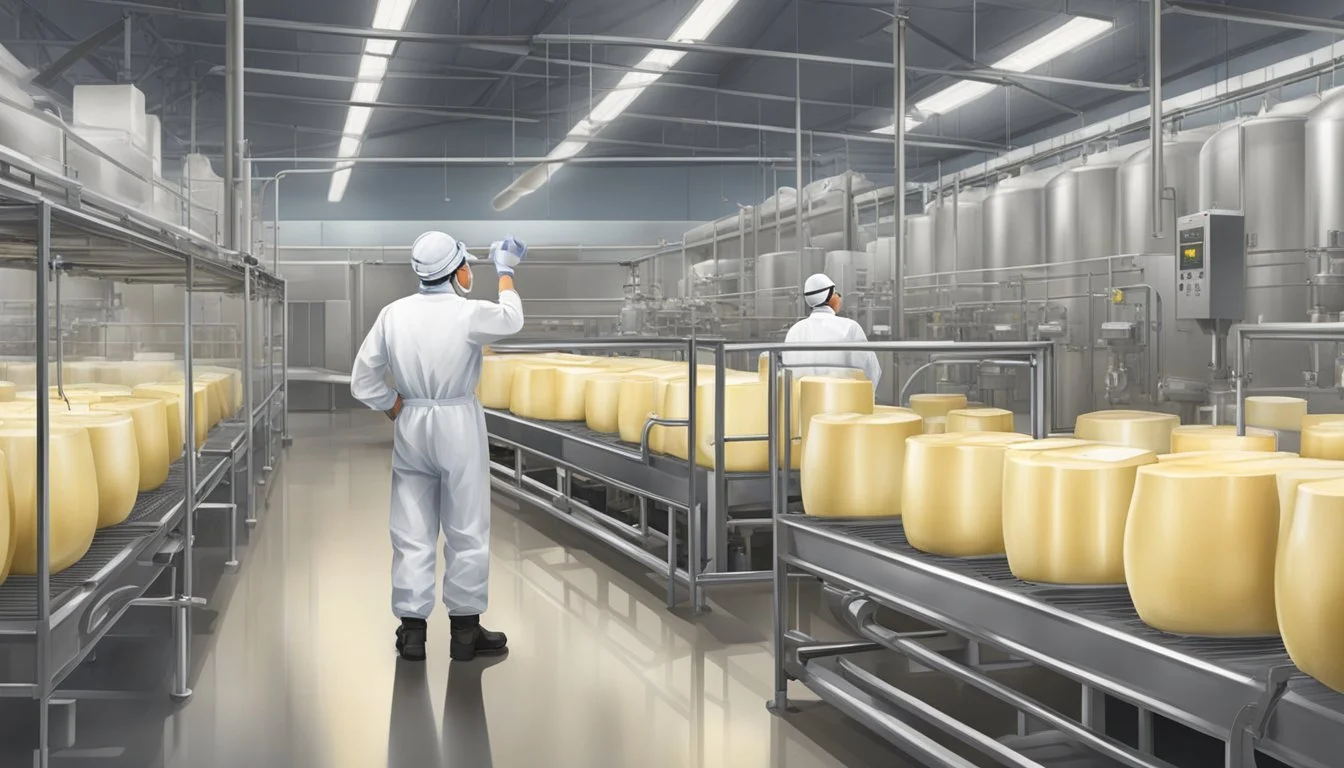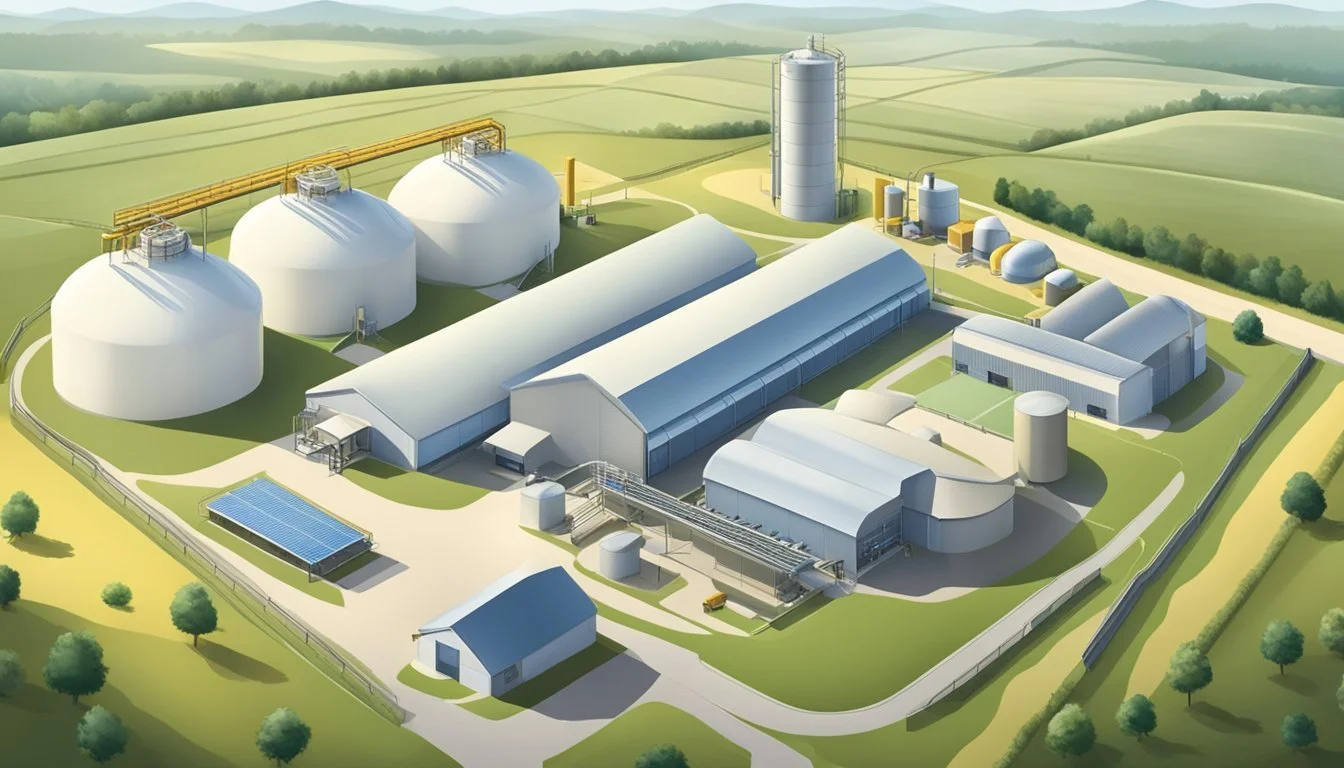Raw Milk Cheese Regulations
Navigating Global Norms and Compliance
Raw milk cheese (What wine goes well with cheese?), produced from unpasteurized milk, is a traditional delicacy enjoyed by many for its rich, complex flavors. Nevertheless, it poses unique challenges regarding public health and safety, resulting in diverse regulatory approaches internationally. The safety of raw milk cheese is of paramount concern because it can harbor pathogens due to poor sanitation, temperature fluctuations, insufficient pasteurization, or using milk from sick animals. To protect consumers, standards and guidelines have been established to minimize the risk of foodborne illnesses.
Internationally, microbiological criteria for dairy products vary, with stringent regulations focusing on the presence of specific pathogens, such as Listeria monocytogenes and Salmonella. For instance, European Union directives mandate the absence of Listeria in 1g of hard cheese or 25g of other cheese varieties and a total absence of Salmonella in 1g. These standards serve as benchmarks for producers and regulators, ensuring that the production of raw milk cheese meets safety expectations.
In addition to governmental regulations, industry organizations offer guidance to support the production of safe raw milk cheeses. Producers strive to meet common standards that detail practices in sanitation, animal health management, and testing protocols. These measures aim to maintain the integrity of raw milk cheese production while safeguarding consumer health, balancing tradition with the imperative of modern food safety standards.
Raw milk cheese regulations play a vital role in ensuring the safety and quality of this beloved dairy product. The raw milk community values the rich and distinct flavors that raw milk cheese offers, and it's important to have regulations in place to maintain its integrity.
While some may debate the benefits of homogenization raw milk in cheese production, the focus on adhering to raw milk cheese regulations ensures that consumers can enjoy this delicacy with confidence. Raw milk cheese also boasts a high calcium raw milk content, providing a nutritious option for those seeking to incorporate this essential mineral into their diet.
In the ongoing raw vs. pasteurized milk debate, raw milk cheese regulations serve as a framework for balancing tradition and safety. Additionally, the potential benefits of raw milk in skincare are a topic of interest for many, and the regulations surrounding raw milk cheese contribute to maintaining its purity for various purposes.
Ultimately, raw milk cheese regulations support the raw milk community health by promoting responsible production and consumption practices, allowing enthusiasts to savor the unique qualities of raw milk cheese while upholding safety standards.
Historical Context and Definitions
The intricate regulations and standards surrounding raw milk cheese have evolved over centuries of cheese production. This section provides a detailed investigation into the heritage of cheese making, the specific nature of raw milk cheese, and how it stands apart from cheeses made with pasteurized milk.
Evolution of Cheese Production
Cheese production has been a staple in human culture, dating as far back as 8000 BCE when sheep were first domesticated. The process has evolved from an artisan craft to a highly regulated industry. In the 20th century, the advent of pasteurization marked a significant turning point in cheese production, leading to stringent regulations designed to ensure food safety.
Raw Milk Cheese Definition
Raw milk cheese is defined as cheese produced using milk that has not been pasteurized. This means the milk has not been heated to temperatures that kill pathogenic bacteria. International regulations often stipulate that raw milk cheese must undergo a specific aging process—a minimum of 60 days at 35 degrees Fahrenheit—to mitigate the risk of illness from harmful microbes.
Distinction Between Raw and Pasteurized Milk Cheese
The primary distinction between raw and pasteurized milk cheese goes beyond the initial milk treatment:
Raw Milk Cheese: Made with milk that retains its natural microbiota, which can impart complex flavors.
Pasteurized Milk Cheese: Produced using milk that has been heated to at least 161 degrees Fahrenheit for 15 seconds or equivalent, eliminating most bacteria and resulting in a milder flavor profile.
These differences have significant implications not just for taste, but also for the safety, regulatory requirements, and cultural heritage associated with various cheeses.
Health and Safety Considerations
The production and consumption of raw milk cheeses come with a multitude of health and safety considerations, balancing the potential for health benefits against the risks of foodborne illnesses.
Pathogens and Public Health Concerns
Raw milk cheese is a potential vehicle for harmful pathogens such as E. coli, Listeria, Salmonella, and Campylobacter. These microorganisms, if present in raw milk, can survive the cheesemaking process and affect public health. To mitigate these risks, regulatory bodies, such as the FDA in the United States, enforce strict standards, which include, for instance, the 60-day aging rule at temperatures above 35°F. This regulation attempts to reduce pathogenic presence in raw milk cheeses.
Health Benefits and Risks of Raw Milk Cheese
Raw milk cheeses are often valued for their complex flavors and artisanal quality. Some proponents suggest that they contain beneficial bacteria and enzymes that may be destroyed during pasteurization. However, these potential health benefits must be balanced with an understanding of risks, as raw milk cheese can also expose consumers to foodborne pathogens, giving rise to diseases that include tuberculosis and brucellosis.
Foodborne Illnesses Associated with Raw Milk Products
Food Safety Management is a critical aspect of raw milk cheese production. Cheesemakers must adhere to rigorous food safety protocols to minimize the risk of foodborne illness. The incidence of foodborne illnesses associated with raw milk products has prompted comprehensive studies, which seek to evaluate the microbial characteristics of pathogens implicated in raw milk. The emphasis on food safety recognizes the severity of foodborne illnesses, emphasizing the importance of strict controls to protect consumers’ health.
Regulatory Landscape
The production and sale of raw milk cheese are subject to a complex network of regulations that vary significantly across different jurisdictions. Third-party standards also play a role in shaping industry practices globally.
International Regulations and Standards
Codex Alimentarius serves as a key international reference, setting out food standards to ensure fair practices in food trade and protecting consumer health. Raw milk cheese falls within its scope, with guidelines addressing everything from hygienic practices to product labeling. The EU, for example, adopts less stringent controls on raw milk cheese compared to countries like Canada, with the former allowing a broader spectrum of raw milk products.
Domestic Guidelines and FDA Oversight
In the United States, the Food and Drug Administration (FDA) tightly regulates the cheese industry, including raw milk cheese. The FDA requires that raw milk cheeses be aged for a minimum of 60 days to reduce the risk of pathogen contamination. Additionally, the FDA conducts periodic inspections and testing to ensure that domestic cheese producers adhere to safety standards. This contrasts with Canadian regulations, which are typically more prohibitive regarding raw milk cheese production and consumption.
Compliance and Enforcement in Cheese Production
Compliance with regulations is fundamental for the cheese industry to maintain product safety and consumer trust. In terms of enforcement, countries deploy a range of measures, from routine inspections to strict testing for microbial contamination, such as limiting non-pathogenic E. coli counts. In Australia, for instance, the standard is set at no more than 10 colony-forming units per gram (cfu/g) for E. coli in domestically produced raw milk cheese. Producers are also obligated to follow packaging and storage guidelines to minimize the risk of contamination and ensure the integrity of their products throughout the supply chain.
Raw Milk Cheese Production
Raw milk cheese, characterized by its rich and complex flavors, is produced using milk that has not undergone pasteurization. It's essential to understand the careful practices that cheesemakers must employ to ensure the safety and quality of raw milk cheese.
Cheesemaking Process for Raw Milk Varieties
Raw milk cheese production begins with the selection of high-quality raw milk, which contains naturally occurring microbes that contribute to cheese flavor and texture. Cheesemakers control fermentation using either natural cultures from the milk itself or specific cultured bacteria.
Milk Sourcing: Obtaining fresh, clean raw milk is critical.
Coagulation: Milk is coagulated using rennet or acidic substances.
Curding: The coagulated milk forms curds and whey.
Processing Curds: Curds are cut, cooked, and shaped according to cheese type.
Critical Control Points in Production
Cheesemakers implement systematic monitoring at critical control points to prevent microbiological hazards.
Sanitization: Equipment and utensils must be properly sanitized.
Curing: Cheese must be cured for at least 60 days at temperatures above 35°F to reduce pathogenic bacteria.
Storage: Cheese should be stored in conditions that prevent contamination and promote proper aging.
Microbiology of Raw Milk Cheese
Microbes play a significant role in the development of the cheese's flavor profile and safety. Lactic acid bacteria are responsible for fermentation, while other beneficial microbes contribute to cheese maturation. However, pathogenic microbes such as Listeria monocytogenes and Escherichia coli must be monitored and controlled.
Beneficial Microbes: Enhance flavor complexity and aid maturation.
Pathogens: Regular testing is crucial to detect and manage harmful bacteria.
Quality Control: Sensory and scientific analysis ensure the microbiological safety of the cheese.
Safety and Quality Management
The assurance of safety and quality in raw milk cheese production hinges on rigorous testing and monitoring, the implementation of science-based safety protocols, and concerted efforts to educate both producers and consumers.
Testing and Monitoring for Safety
Testing: Regular testing is central to safety and quality management in raw milk cheese production. Producers need to aim for target levels such as less than 10 coliforms per ml and less than 5,000 somatic cells per ml in raw milk, as benchmarks indicative of a high standard of hygiene and animal health.
Regular Monitoring: A rolling three-month average is a common period for evaluating these metrics, ensuring consistent quality over time.
Pathogen Screening: All raw milk used in cheesemaking must be tested for the absence of pathogens to prevent foodborne illnesses.
Implementing Science-Based Safety Protocols
Employing science-based safety plans, such as the Risk Analysis and Management Plan (RAMP), allows cheese producers to identify and control potential hazards.
Regulatory Compliance: Adherence to state and federal regulations ensures that cheese manufacturers meet stringent safety standards.
Best Practices: Institutions such as the Raw Milk Institute provide guidelines on safety management systems that include both reactive and preventive measures.
Educating Producers and Consumer Outreach
Training: It is critical that cheese makers receive up-to-date training on safety and quality regulations. This ensures that the raw milk cheese available to consumers has been produced under the safest conditions.
Consumer Education: Informative outreach initiatives guide consumers on how to identify safely produced raw milk cheeses.
Supporting Local Economies: By advocating for proper education on raw milk cheese, stakeholders support small businesses and contribute to local, sustainable agriculture.
Consumer Awareness and Education
Effective consumer awareness and education are vital in ensuring safe consumption of raw milk cheeses. Education initiatives should focus on transparent labeling, clear communication of risks, especially to vulnerable groups, and aiding consumers in making informed cheese selections.
Labeling and Information Transparency
Labeling is the first point of contact between consumers and raw milk cheese products. Labels should clearly indicate if a cheese is made from raw milk and provide information about the cheese’s age, which is particularly important given regulations like the 60-day aging requirement for safety. Accessibility to this information enables consumers to make educated decisions based on their dietary preferences or restrictions.
Key Components on Labels:
Origin of milk (raw or pasteurized)
Age of cheese
Presence of potential allergens
Contact information of the producer for further inquiries
Risk Communication to Vulnerable Populations
Vulnerable populations, including children, pregnant women, and individuals with compromised immune systems, should be made aware of the risks associated with consuming raw milk cheeses. Educational materials, which might be distributed in healthcare settings, need to articulate that these groups are at a higher risk of contracting foodborne illnesses from raw milk products.
High-Risk Individuals Should Be Advised:
To recognize raw milk cheese products
About the potential health risks
To consult with healthcare providers before consumption
Promoting Informed Cheese Selection
The act of choosing a cheese is not merely a matter of taste but also one of health. Educating consumers on the complexities of raw milk cheeses—including their unique flavors and potential risks—helps in fostering a community that appreciates the artisanal value while acknowledging the importance of food safety practices.
Educational Focus Areas:
The distinction between raw and pasteurized milk cheese
The significance of the 60-day aging rule for raw milk cheese
The health benefits and risks associated with raw milk cheese consumption
Market Dynamics and Trends
The raw milk cheese market is influenced by consumer preferences and regulatory environments, which shape the production and distribution of these artisanal foods.
Demand for Artisanal and Traditional Cheeses
Consumers increasingly seek artisanal and traditional cheeses, with a particular affinity for the uniqueness of raw milk cheeses. They value the complex flavors and traditional cheese-making methods, having a direct impact on the market's dynamic. This demand fuels the artisanal segment of the industry, with raw milk cheese producers experiencing growth as they cater to this niche market.
Trends in Domestic and Imported Raw Milk Cheese
The market is observing an interesting balance between domestic and imported raw milk cheeses. Domestic producers are stepping up their game, focusing on craft cheeses that embody regional identity and traditional techniques. Conversely, imported raw milk cheeses continue to hold significant market share, offering consumers a taste of international cheese styles and heritage.
Domestic Trends: Local producers are harnessing the demand for craft and specialty cheeses, with a spotlight on small-scale, high-quality production.
Imported Cheese: Despite stringent regulations, there is a consistent flow of imported raw milk cheeses, reflecting consumers’ desire for diverse, international flavors.
Economic Impact on Producers and Industry
The economic landscape for raw milk cheese producers is multifaceted. On one hand, regulations related to the production and sale of raw milk cheeses impact costs and market access. On the other hand, the industry sees opportunities in premium pricing due to the high value placed on these products by cheese aficionados.
Producers' Challenges and Opportunities:
Costs: Stringent safety regulations can drive up costs for producers.
Market Access: Regulations can also limit market entry, affecting smaller producers more acutely.
Premium Pricing: Artisanal producers often benefit from premium pricing, offsetting some of the increased production costs.
Industry Outlook:
Growth in artisanal cheese sectors is indicative of a sustainable increase in demand.
Trade dynamics are influenced by regional regulations, which producers must navigate to optimize market presence.
Case Studies and Notable Incidents
This section delves into specific occurrences that shape our understanding of raw milk cheese regulations internationally, including health risks, models of success, and reactive safety procedures.
Outbreaks and the Role of Raw Milk Cheese
Raw milk cheeses have been linked to foodborne illnesses, including those caused by E. coli O157. A notable incident occurred in 2010 when an outbreak of E. coli was associated with raw milk Gouda cheese in Vermont. The incident highlighted the crucial need for stringent health risk assessments in raw milk cheese production.
Successful Raw Milk Cheese Models
Despite the risks, certain raw milk cheese operations have set high standards for safety and quality, demonstrating successful models. These producers adhere to meticulous hygiene controls and aging processes that reduce health risks, serving as benchmarks for the industry.
Recalls and Safety Responses
Recalls are a critical aspect of safety responses in the dairy industry. For instance, when a recall due to potential Listeria contamination of raw milk cheese occurs, manufacturers and regulators respond swiftly to mitigate health risks and prevent the proliferation of foodborne illnesses. These reactions are essential in maintaining public trust and ensuring food safety.








